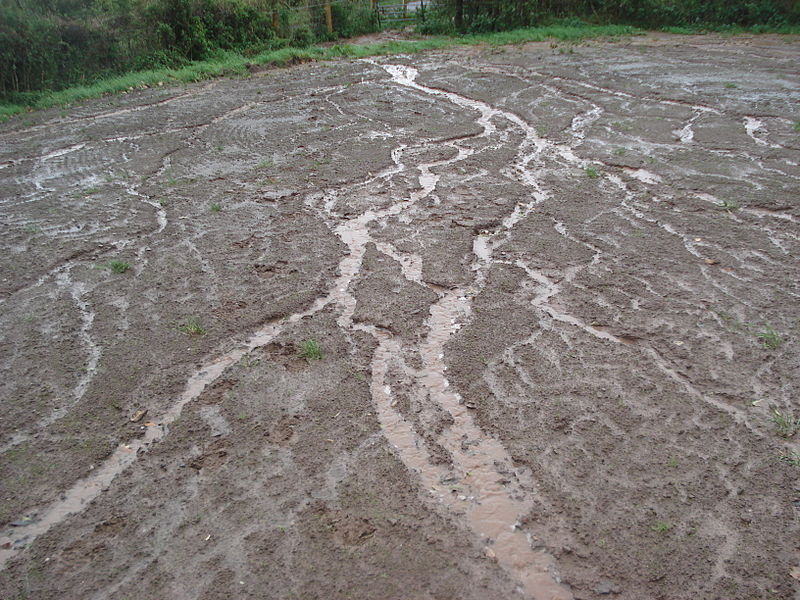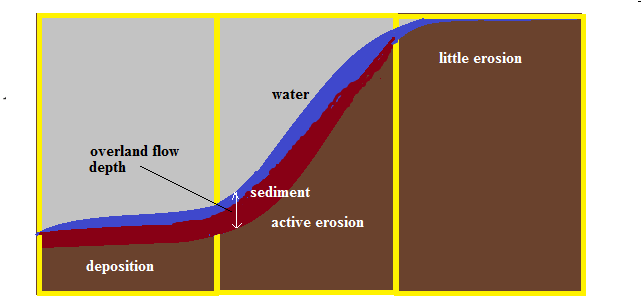efinitions
- Cohesion
- The ability of material to stick together e.g. clays
Overland flow on slopes
Overland flow is the unconcentrated movement of water as sheetwash or concentrated into channels such as rills. It is unconcentrated upon the fact that water does not flow into any distinct channels such as rills or pipes, rather it just flows unconcetrated on the surface.
Sheetwash is a result of Overlandflow. Sheetwash only operates within a few inches deep from the surface collecting soil in the path.
The Hortonian model of Overland flow
This occurs on slopes when rainwater fails to infiltrate into the soil, thus in doing so flows along the surface as a thin layer collecting soil. It is more pronounced in arid regions where soils are thin and without vegetation and the underlying rocks are usually impermeable.
The erosive power of water must overcome the shear resistance of soil, once it is overcome the soil is moved.
On the convex upper slope (gentle) overland flow is less pronounced and therefore erosion as soil resistance is greater than than the flowing water. Also water is given time to infiltrate as the surface is relatively flat.
The middle part of slopes is where active erosion is present due to the built up of strength of water from the up slope.
Flow of water is fast and is concentrated into tiny channels called rills which are a few millimetres deep.

Gullies are hollow depressions or widened and deepened rills. The concave gentler unit is primarily deposition of all material.

Saturated Overland flow
This occurs when the surface is already filled with water such that when it rains, the rainwater flows with the already available surface water.
Sub surface flow/ Throughflow of water on slopes
Flows of water can be concentrated below the surface into percolines or small pipes. These small pipes usually deposits the water into rivers.
Rainsplash
Rain drop impact is capable of dislodging (splashing) soil particles, especially incohesive sand, in different directions. On slopes, there’s a net movement of soil down than up. Large raindrops are capable of dislodging larger soil particles and cohesive clays.

Bioturbation
Plants and animals also play an important role in slope processes. Burrowing animals such as worms excavate through the soil dislodging it and triggering movements. Uprooting of plant roots can also also trigger soil movements.

